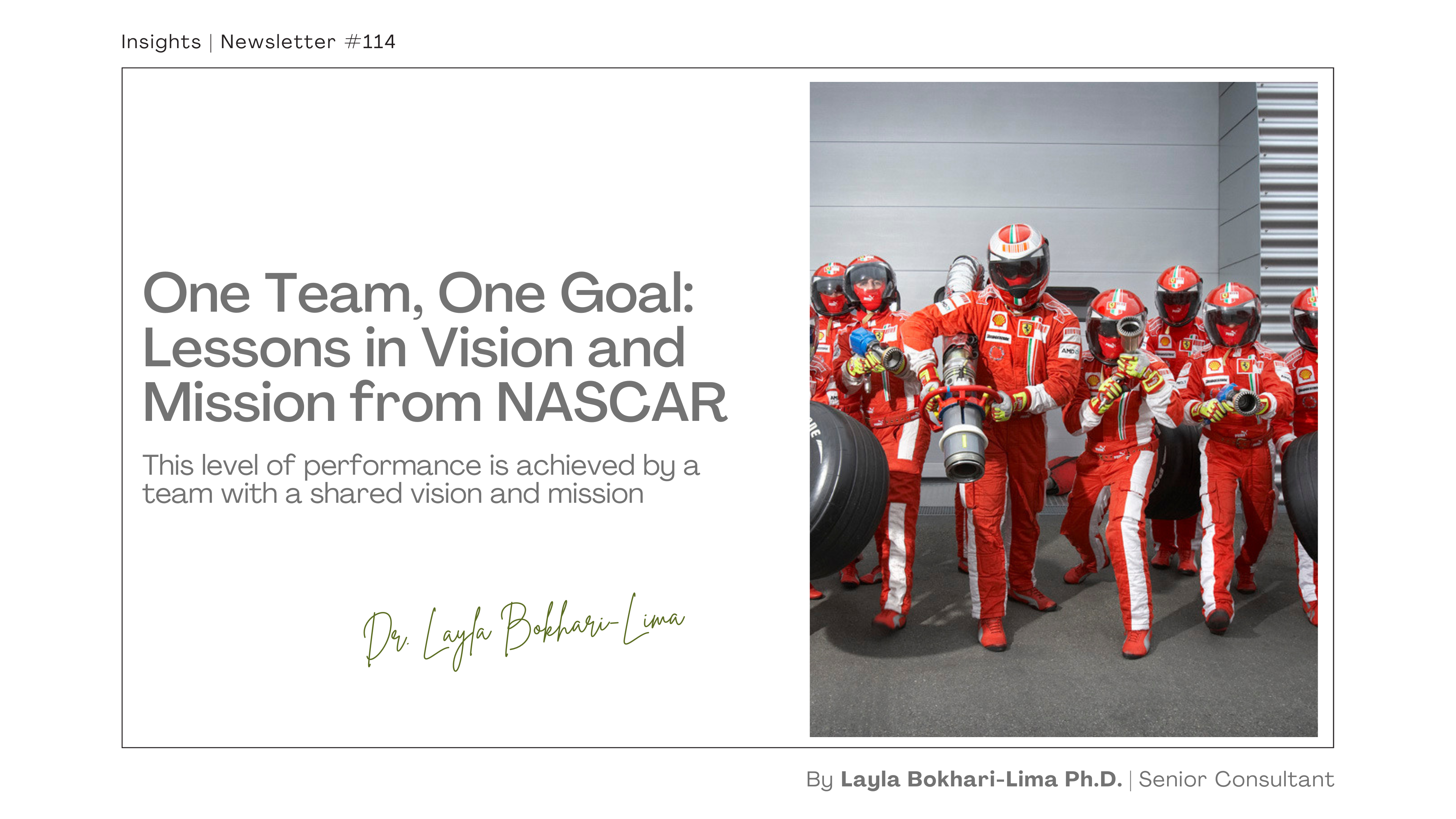
One Team, One Goal: Lessons in Vision and Mission from NASCAR
Recently, while scrolling through Instagram, I came across a captivating reel showcasing the evolution of pit stops in car racing from 1990 to 2023. The remarkable progression caught my attention, with pit stop times decreasing significantly over the years – from 8.95 seconds in 1990 to an astonishing 1.78 seconds in 2023.
In the 2023 reel, what stood out to me was the precision and synchronization of each individual’s role in the pit stop process. Every team member had a distinct and intricate task, working collaboratively to remove and replace wheels. It was evident that each person had a specific purpose, contributing to the seamless 1.78-second pit stop they had tirelessly practiced throughout the year.
This level of performance is achieved by a team with a shared vision and mission. When a small group of individuals has to change four tires, refuel, make rapid adjustments to the suspension, and get a car back on the track within seconds, teamwork becomes absolutely essential.
Behind the scenes, there’s an entire team of people – mechanics, engineers, specialists, and marketing strategists – working together under intense time pressure. The team is carefully selected based on individual strengths, and each member is placed in a role crucial to the team’s success. Take Jeff Gordon’s early crew, for example; it consisted of a chief mechanic with a background as a former truck mechanic from a car dealership in New Jersey and a parts guy who, in his full-time job, sold plumbing supplies. This diverse team shared a hunger for victory and aligned with the leader’s vision and mission.
With the right people in the right positions, the focus shifts to the processes in place. Everything from analyzing “game films” of the previous race and identifying areas for improvement to the physical training of the crew and the high-speed choreography of the pit stop is meticulously planned and executed. This approach proved so valuable that competitors later adopted these methods, attesting to their effectiveness.
NASCAR’s nearly ten-month season is the longest in professional sports, making it challenging to keep the team engaged and prevent burnout. Despite the pressure, this particular team stayed together for six years, emphasizing the importance of unity and continuity. Every member understood their role’s significance, whether it was a seemingly small task like removing a tire, and they recognized how their contribution directly impacted the team’s success or failure. The team practiced relentlessly to stay in sync, all for those fleeting moments in the limelight during a race weekend.
Recently, the CEO of a $12 billion company invited my colleague and I to the new office building to discuss some issues he was having with his executive team. They were not “jelling” as they should. Something was off. Everyone was busy but not headed in the same direction. That’s when we got to work. First, we needed to know where to focus our attention, so the team took The Team Assessment Survey (TAS). The CEO was right; they were all headed in different directions, and the results illustrated that. As a team, they scored 30% on the TAS. We debriefed the results and chose the areas to focus on for the year as an executive team. The definition of success was imperative for this team. They needed to be one team with one goal. So we worked with the team quarterly for a year on vision, mission, communication, and conflict. The leader knew his vision for the team and just needed to articulate it in a way that gave the team purpose. After working on this with him, the leader was able to communicate his vision, and the team had their definition of success. After the year of working with them, they reassessed themselves as a team and scored in the 80s on the TAS. This was a phenomenal improvement. The feedback from the executive team as well as people in the organization stated that culture and morale had changed for the better.
Leaders can learn a lesson from this story about articulating a vision and mission to their team that illustrates how essential each person’s roles are for the short-term and long-term success of the team. Take the time to articulate your vision and mission to the team so they can move in the same direction. One team, one goal!
